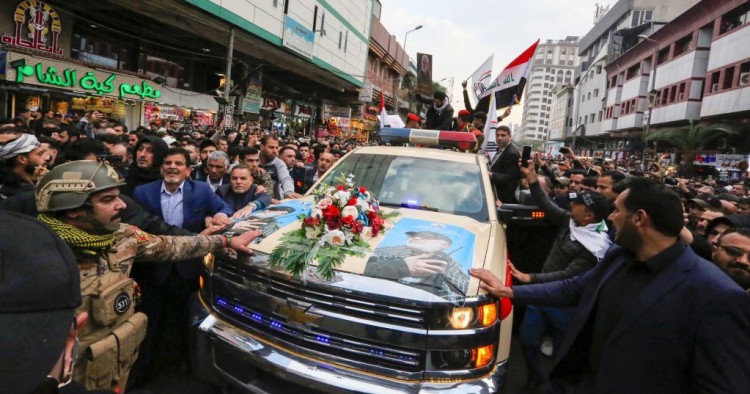Iraq is entering 2020 in a situation it has long sought to avoid: stuck in the middle of an U.S.-Iran military escalation. The killing of Revolutionary Guards Quds Force commander Qassem Soleimani on Jan. 3 on Iraqi soil and the expected Iranian retaliation, part of which will likely unfold in Iraq, have created political and security dynamics that are bound to bring to an end to the U.S. force presence in the country. While yesterday’s vote in the Iraqi Council of Representatives (COR) on a decision to remove U.S. forces is not legally binding, it creates dynamics inside the U.S. and Iraq that make a U.S. decision to remove its forces all but inevitable. Despite U.S. President Donald Trump’s threats to impose sanctions on Iraq in response to the COR decision, the timing and conditions for a U.S. force withdrawal remain unclear. The Iraqi prime minister met today with the U.S. ambassador to Iraq to discuss the need for joint action to implement the COR decision.
What are the implications of these developments for Iraq?
- The protest movement that started in October, part of which was motivated by demands to rein in Iran-linked Iraqi militias like Kataeb Hezbollah, has hit a major roadblock. Instead of making concessions, these militias now feel emboldened to pursue any party that stands in their way, including the protesters.
- The COR vote yesterday was boycotted by Kurdish and Sunni parliamentarians with few exceptions. As Iran and its Iraqi militias hold more sway over the political space in Iraq, Sunni and Kurdish leaders and their constituent communities will start contemplating measures to protect themselves. While support for ISIS is at an all-time low among Iraqi Arab Sunnis, Iran-linked Iraqis militias have not been the picture of law and order in these communities.
- U.S.-Iraq relations will be damaged. Despite yesterday’s claim by the Iraqi prime minister that the U.S. and Iraq can maintain good relations even if American forces were to leave Iraq, bilateral relations would be hurt by a forced U.S. withdrawal that will be seen in the U.S. as caving to Iranian orders. Acting on the COR decision puts Iraq in Iran’s camp. Trump has already threatened to deploy the economic leverage the U.S. has in the country, which could include refusing to renew a waiver license for Iraq to import gas from Iran and restricting the flow of U.S. dollar notes to Iraq.
- The fight against ISIS will be in jeopardy. At a time when ISIS cells are working to regroup in Iraq and Syria, though they lack the capacities and political capital to reconstitute their long-gone caliphate, the withdrawal of U.S. forces will undermine U.S. and regional allies’ abilities to deny ISIS a safe haven in the Levant. Not only will the Iraqi Security Forces be denied the assistance and training now provided by U.S. forces, it is highly unlikely that the governments of other non-U.S. coalition forces operating in Iraq, including the French, British, and Canadians, can politically afford to let their forces stay in Iraq after a U.S. withdrawal.
- Regionally, Iraq’s outreach to its Arab Gulf neighbors will also be seriously affected. Arab Gulf countries have been trying to distance themselves from the U.S. decision to kill Soleimani and are increasingly concerned about the lack of a post-kill U.S. strategy and the potential impact from an all-out regional war. But Arab Gulf governments will also see shifts in Iraqi domestic politics that empower Iran-linked militias and Iran’s role in Iraq as not in their favor and will work to counter them, starting with downgrading economic relations with Iraq.
Randa Slim is a Senior Fellow and the Director of MEI’s Conflict Resolution and Track II Dialogues Program.
Photo by SABAH ARAR/AFP via Getty Images
The Middle East Institute (MEI) is an independent, non-partisan, non-for-profit, educational organization. It does not engage in advocacy and its scholars’ opinions are their own. MEI welcomes financial donations, but retains sole editorial control over its work and its publications reflect only the authors’ views. For a listing of MEI donors, please click here.













